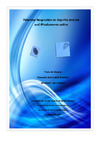Identificador persistente para citar o vincular este elemento:
https://accedacris.ulpgc.es/handle/10553/9223
| Campo DC | Valor | idioma |
|---|---|---|
| dc.contributor.advisor | Packard, Theodore T. | - |
| dc.contributor.author | Aristizábal, Manuela | - |
| dc.date.accessioned | 2013-01-24T06:00:07Z | - |
| dc.date.accessioned | 2018-05-15T10:57:01Z | - |
| dc.date.available | 2013-01-24T06:00:07Z | - |
| dc.date.available | 2018-05-15T10:57:01Z | - |
| dc.date.issued | 2009 | en_US |
| dc.identifier.uri | https://accedacris.ulpgc.es/handle/10553/9223 | - |
| dc.description | Máster en Oceanografía | en_US |
| dc.description.abstract | The Potential respiration in cultures of the heterotrophic flagellate Oxyrrhis marina (predator) and on a micro algae Rhodomonas salina (prey) was calculated from measurements of the electron transport system (ETS) activity. On R. salina these measurements were made during the exponential, stationary and celldecline phase for a period of 64 days, but in O. marina they were only made during the period of starvation (cell-decline phase), for a period of 18 days. Time-courses of Chlorophyll, protein and cell density were compared to the potential respiration (?). In R. salina the ??increased during the exponential phase in parallel with the cell- protein, cell number, and chlorophyll a. In O. marina, separated from its prey, ??followed a similar pattern with the protein, chlorophyll and cell density. Flow cytometry proved useful not only for cell-enumeration, but also for monitoring population changes in thenon-axenic mixed-population cultures. From the physiological and biochemical measurements it is clear that the predator, O. marina was metabolically more active than its prey, R. salina. Its ??was 19 nmO2 min-1 cell-1, 20 times higher than the ? of R. salina, with a ??of only 0,9 nmO2 min-1 cell-1. In addition O. marina was also 20 richer in protein than R. salina (942 versus 47 pg protein/cell). However its protein-specific ? was effectively the same (12 versus 13 nmO2 min-1 (protein)-1, respectively. An interesting finding, that suggests that O. marina may be able to function as an autotroph, was the constancy, for 9 days, of the ingested chlorophyll/cell in O. marina days after all its chlorophyll-rich prey was consumed. | en_US |
| dc.format | application/pdf | es |
| dc.language | eng | en_US |
| dc.relation | Estudio de Un Nuevo Modelo Mecanistico Para El Metabolismo Del Zooplancton | en_US |
| dc.rights | by-nc-nd | es |
| dc.subject | 251001 Oceanografía biológica | en_US |
| dc.title | Potential Respiration in Oxyrrhis marina and Rhodomonas salina | en_US |
| dc.type | info:eu-repo/semantics/masterThesis | en_US |
| dc.type | MasterThesis | en_US |
| dc.compliance.driver | 1 | es |
| dc.contributor.facultad | Facultad de Ciencias del Mar | en_US |
| dc.identifier.absysnet | 674056 | es |
| dc.identifier.crisid | - | - |
| dc.investigacion | Ciencias | en_US |
| dc.rights.accessrights | info:eu-repo/semantics/openAccess | es |
| dc.type2 | Trabajo final de máster | en_US |
| dc.description.notas | Máster en oceanografía ; 2008-2009 | en_US |
| dc.utils.revision | Sí | en_US |
| dc.identifier.ulpgc | Sí | en_US |
| dc.contributor.buulpgc | BU-BAS | en_US |
| item.fulltext | Con texto completo | - |
| item.grantfulltext | open | - |
| crisitem.project.principalinvestigator | Gómez Cabrera, María Milagrosa | - |
| crisitem.advisor.dept | GIR ECOAQUA: Ecofisiología de Organismos Marinos | - |
| crisitem.advisor.dept | IU de Investigación en Acuicultura Sostenible y Ec | - |
| Colección: | Trabajo final de máster | |
Visitas
70
actualizado el 27-ene-2024
Descargas
94
actualizado el 27-ene-2024
Google ScholarTM
Verifica
Comparte
Exporta metadatos
Los elementos en ULPGC accedaCRIS están protegidos por derechos de autor con todos los derechos reservados, a menos que se indique lo contrario.
